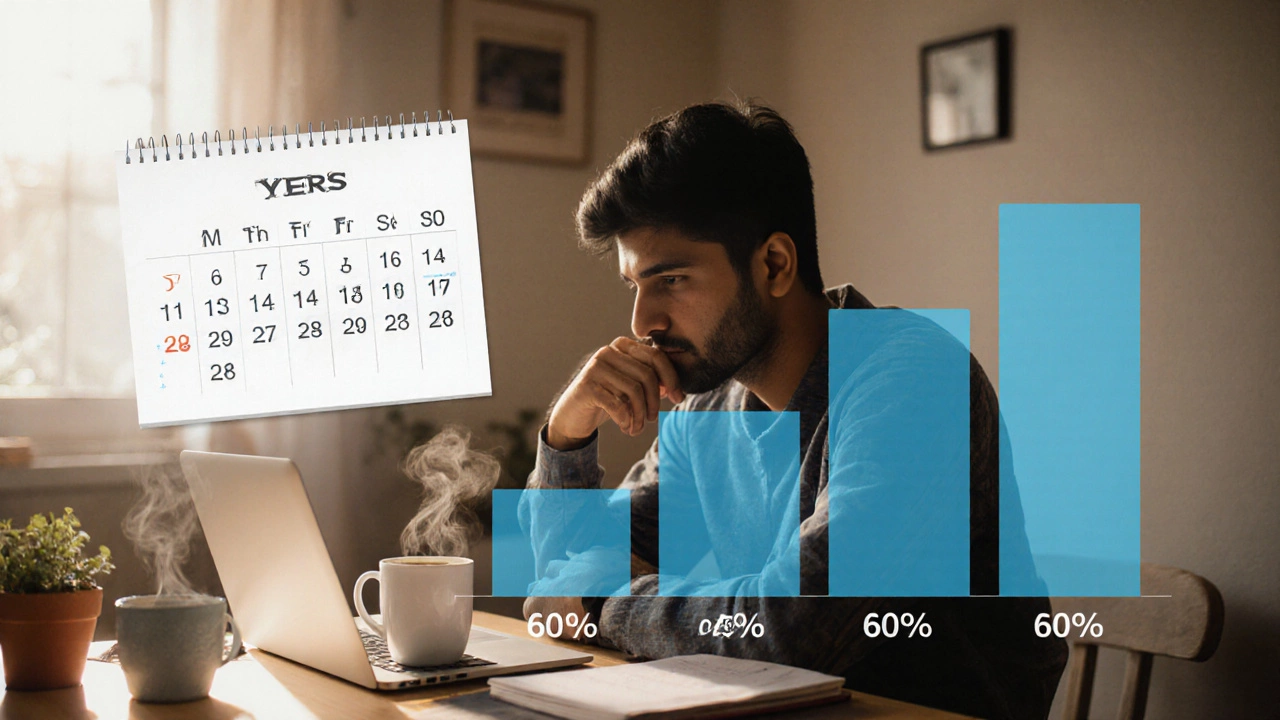Blogger Success Rate Calculator
Your Blogging Journey
Estimate your chance of reaching the 3-year mark by answering these questions about your current approach.
Your Estimated Success Probability
When you hear that most Bloggers are people who regularly create and share content on personal or niche websites never get past the first year, you might wonder if it’s an urban legend or a hard truth. The reality sits somewhere in the middle, and the numbers matter because they shape how you plan, experiment, and stay motivated.
Key Takeaways
- The average blogger failure rate hovers around 60% after three years.
- Top reasons include weak content strategy, unrealistic monetization expectations, and poor SEO techniques that fail to attract organic traffic.
- Choosing a focused niche like sustainable living or indie game reviews boosts persistence by 30%.
- Consistent publishing, audience engagement, and diversified revenue streams cut the dropout risk in half.
- A simple 10‑step checklist can help you diagnose early warning signs before you quit.
Understanding the Numbers
Several industry surveys from 2023‑2024 provide a clear picture. A 2024 study by HubSpot research division sampled 2,500 active bloggers and found that:
- 41% stopped publishing within the first six months.
- Another 19% dropped out between six months and two years.
- Only 40% remained active after three years, meaning roughly 60% have “failed” by the three‑year mark.
Failure here is defined as “ceased regular posting for more than three consecutive months and generated less than $50 in revenue.” The metric aligns with what most aspiring bloggers consider a viable effort.

Why Bloggers Drop Out
Breaking down the causes gives you actionable insight. Below is a table that lists the most common reasons, the typical impact on long‑term viability, and quick fixes.
| Reason | Impact on Success (%) | Quick Fix |
|---|---|---|
| Weak content strategy | -30 | Define editorial calendar; target specific questions. |
| Unrealistic monetization expectations | -25 | Start with low‑threshold ads or affiliate links; diversify later. |
| Poor SEO fundamentals | -20 | Learn basic keyword research; optimize titles and meta. |
| Inconsistent publishing schedule | -15 | Batch write posts; use scheduling tools. |
| Lack of audience engagement | -10 | Reply to comments; ask for feedback in each post. |
Notice how each factor chips away at the same pool of potential readers and revenue. Address them early, and you’ll dramatically improve your odds.
Debunking Common Myths
Myth #1: "If you don’t make $1,000 a month in six months, you’ve failed." The data shows most profitable blogs need 12‑18 months of steady traffic before revenue spikes.
Myth #2: "You need a perfect Website Design that looks like a magazine to attract readers." In reality, readability and fast loading matter more than flashy graphics.
Myth #3: "Choosing a broad niche guarantees a larger audience." Broad topics dilute authority; a tight niche builds trust faster, leading to higher conversion rates.
How to Boost Your Odds of Success
Below is a practical, step‑by‑step roadmap you can start today.
- Pick a narrow, passionate niche. Use tools like Google Trends to verify steady interest.
- Validate demand. Write a 1,000‑word pillar post and promote it on a relevant subreddit or Facebook group. If you get 50+ comments, you’ve found an audience.
- Set a publishing cadence. Commit to at least one long‑form article (1,500+ words) every two weeks.
- Master basic SEO. Target long‑tail keywords, include them in H2 headings, and add internal links.
- Engage readers. End each post with a clear call‑to‑action (“What’s your experience? Share below!”).
- Monetize modestly. Start with affiliate links related to your niche, then add display ads once you hit 5,000 monthly visitors.
- Track metrics. Use Google Analytics to monitor page views, bounce rate, and average session duration.
- Iterate based on data. If a post underperforms, rewrite the headline and meta description.
- Build an email list early. Offer a free checklist or template in exchange for an address.
- Network with peers. Guest post on complementary blogs to earn backlinks and expand reach.
By following this checklist, you address the top five failure triggers simultaneously, giving your blog a solid foundation.

Checklist: Early Warning Signs to Watch
- Publishing less than once a month for three consecutive months.
- Organic traffic below 200 monthly visitors after the first six months.
- No comments or email sign‑ups in the last quarter.
- Revenue consistently under $20/month without any new monetization experiments.
- High bounce rate (>70%) on most posts.
If you spot any of these, pause, analyze, and adjust before you decide to quit.
Next Steps for Different Scenarios
If you’re just starting: Focus on niche selection and build a 3‑post launch series. Publish them within the first month to set a rhythm.
If you’re stuck at 0‑500 visitors: Re‑audit your SEO, improve title tags, and share each post in at least three niche communities.
If you’ve hit a plateau at $30/month: Diversify revenue - add a digital product (e‑book, template) or a Patreon tier for loyal readers.
Remember, the blogger failure rate isn’t a verdict; it’s a metric that tells you where the odds are stacked. With the right data‑driven moves, you can beat the odds.
Frequently Asked Questions
What is the most reliable source for blog failure statistics?
Industry studies from platforms like HubSpot, Ahrefs, and ConvertKit, which regularly survey large samples of active bloggers, provide the most credible numbers. Their methodology usually defines failure as stopping regular publishing for three months and earning under $50 in revenue.
How long does it typically take to start making money from a blog?
Most blogs see their first meaningful earnings after 12‑18 months of consistent traffic growth. Early revenue often comes from low‑threshold affiliate links or display ads once you reach around 5,000 monthly visitors.
Is it better to blog on a free platform or self‑host?
Self‑hosting on WordPress.org gives you full control over SEO, monetization, and design, which significantly lowers the failure risk. Free platforms limit customization and can hinder long‑term growth.
What are the top three metrics I should monitor?
Focus on organic traffic (sessions), average session duration, and conversion rate (email sign‑ups or affiliate clicks). These indicators directly reflect audience interest and monetization potential.
Can a blog survive without any monetization?
Yes, if the goal is brand building or personal expression. However, adding a modest revenue stream (e.g., a single affiliate link) often boosts motivation and reduces the perceived risk of quitting.



